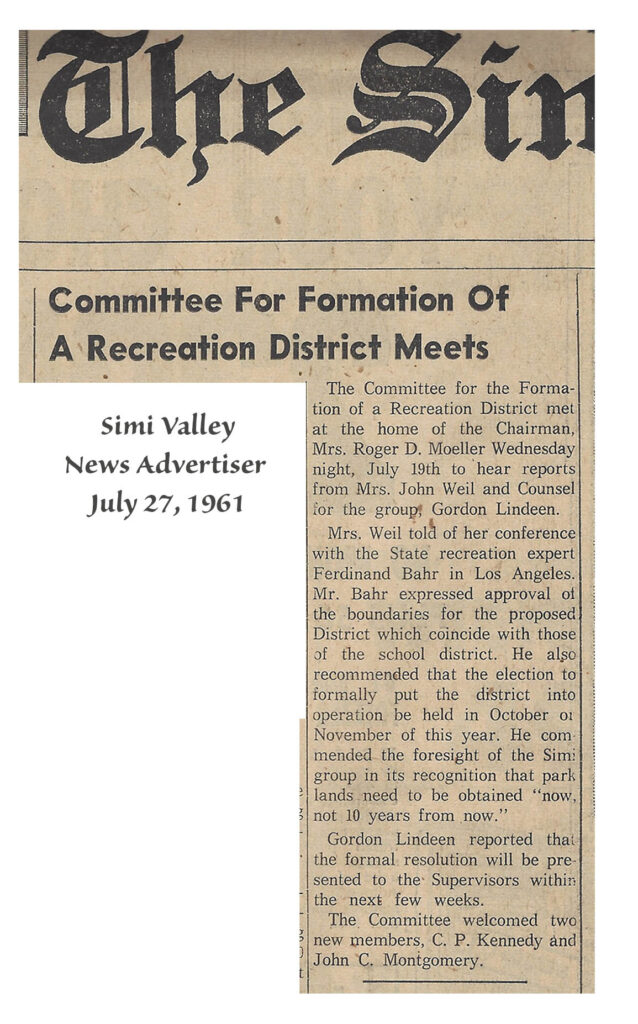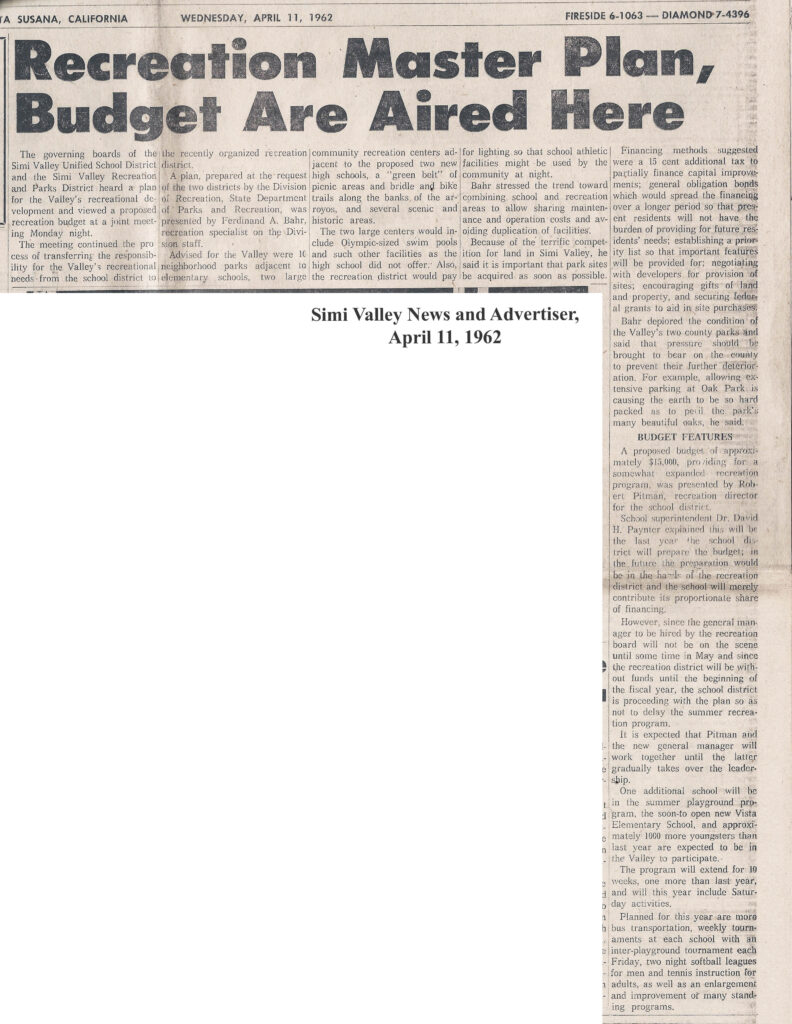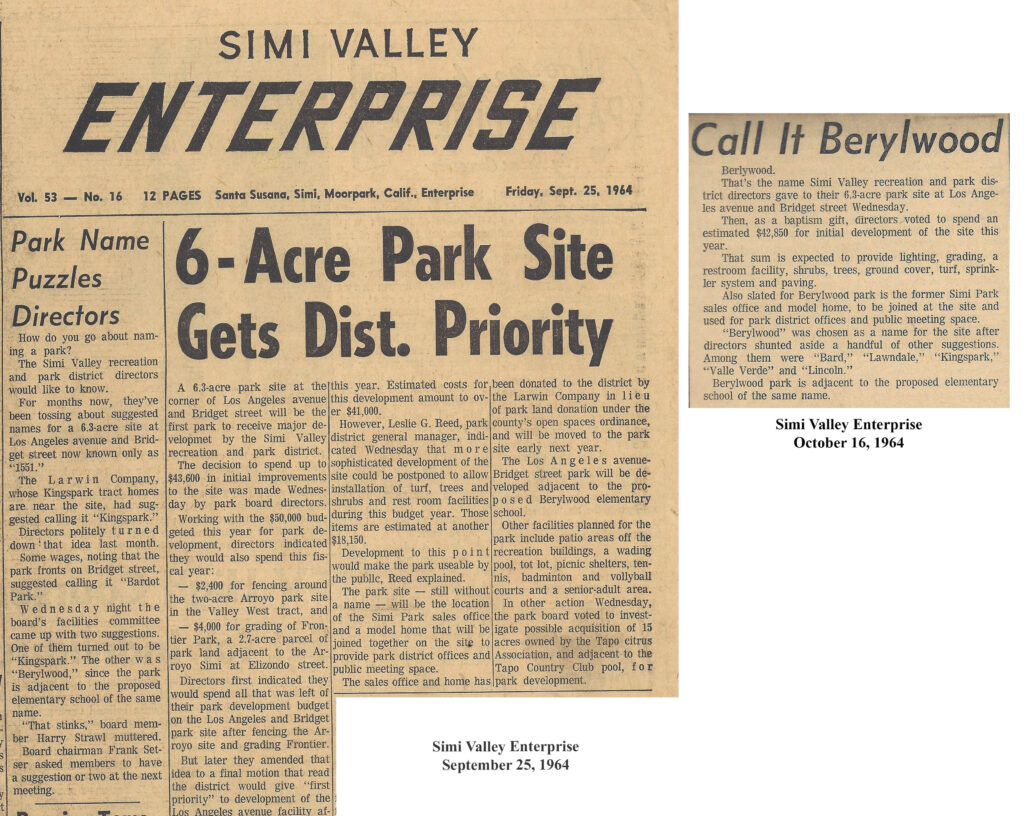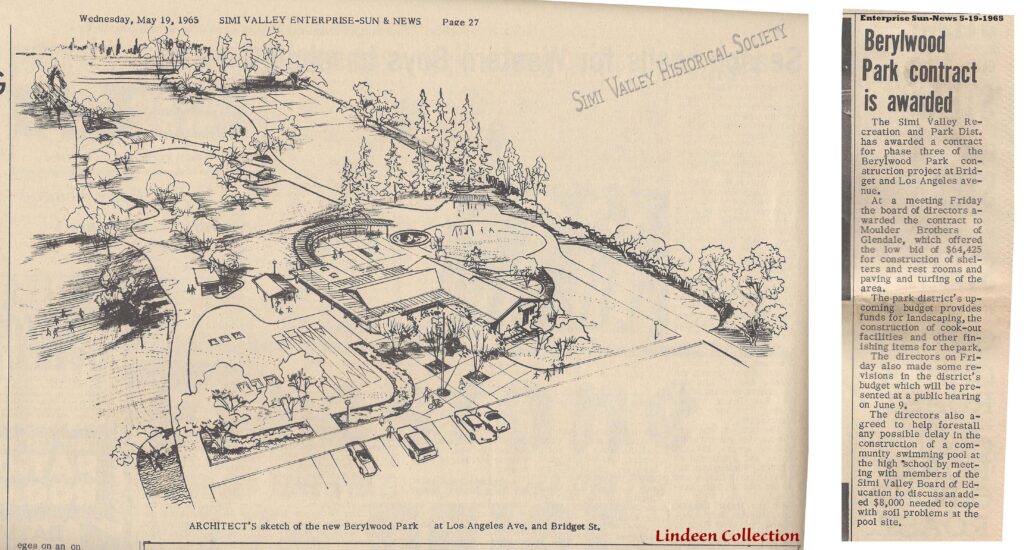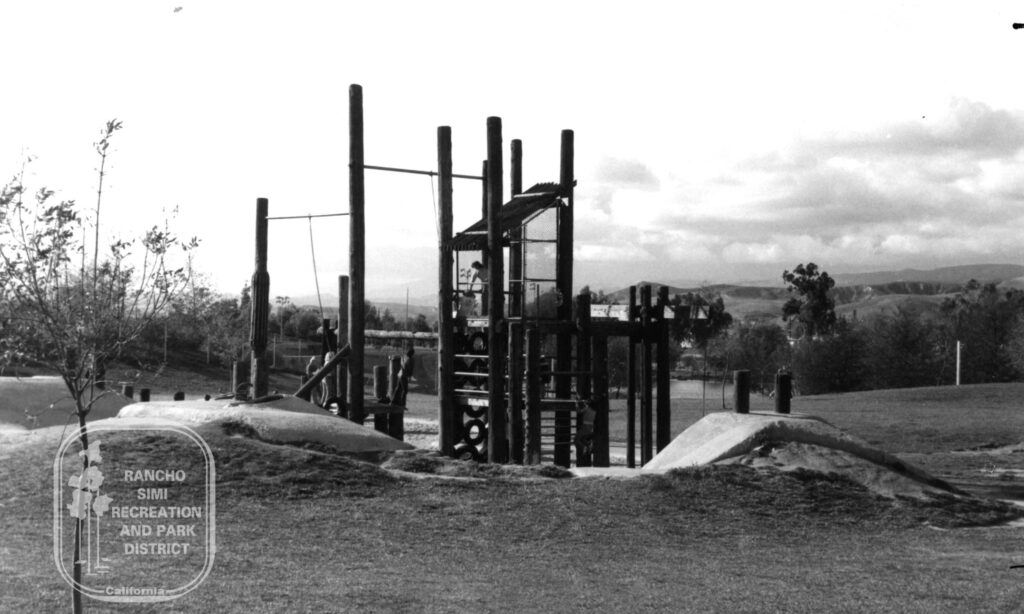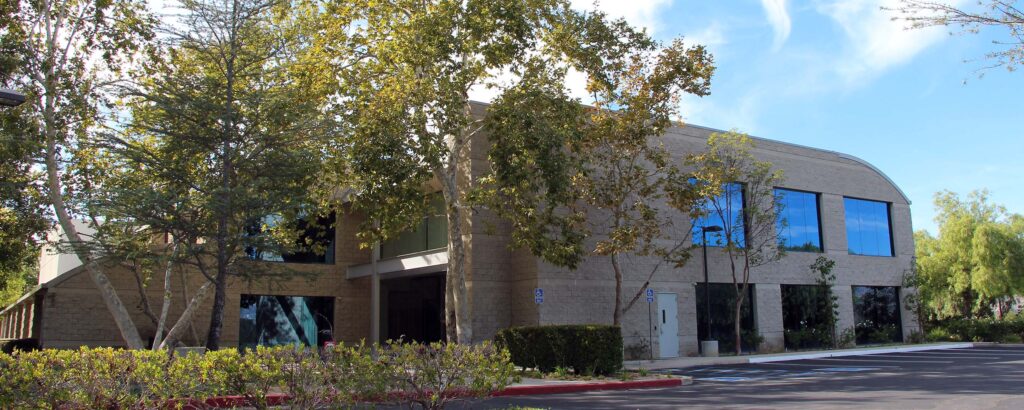Before the District was formed in 1961, recreation in Simi Valley was loosely organized by a recreation department through the school district. There were also groups and activities organized by churches, and groups formed by citizens, like the Simi Valley Athletic Association. Pat Havens (City Historian and Simi High Class of 1947) recalls recreation prior to the formation of the Park District:
“Everyone knew each other so well. They just pitched in where needed. Private citizens coached girls’ baseball. We always had a good football coach, but I think he was one-fits-all kind of coach. Other teachers took on various sports. I remember one unlikely tennis coach.
Our facilities were so bad. The tennis court was the basketball court! Doug Strathearn lived only a block away, so he knew that court like the back of his hand. We had the advantage over visiting teams because he knew where the cracks were!”
In the late 50s the Simi population began to grow rapidly as residential development boomed (population in 1950: 4,073, 1960: 8,110, 1962: 15,860, 1965: 43,016). The first tracts were built in the late 1950s, and community members were concerned that with all of the residential developments that were being planned, not enough land would be set aside for parks and playgrounds. Simi’s incorporation wouldn’t take place until 1969, so land acquisition could not be coordinated through the City. Members of the Simi Valley Athletic Association, a group which organized boys’ baseball, became involved in the formation of an independent Park and Recreation District along with other community members. In December 1959, a meeting of the Citizens Educational Advisory Council was held, out of which came a recommendation for a Recreation Council.

News items are organized by year below.
Click on PDF link to see more news items.
- According to a Sept. 28, 1961 Simi Valley News article, in February of 1960 a committee for the formation of a Park and Recreation District was assembled.
- An article published on July 27, 1961 reported “The proposed District is being formed to participate in land acquisition through gifts by individuals and subscribed by sub dividers for development into play lots, playgrounds and neighborhood centers.”
- The Park District adopted the same boundaries of the school district, which at the time included Oak Park.
- The formation of the recreation and park district was put on the ballot for October 1961. Simi voters voted 1,056 to 342 in favor of the formation of the District.
- Fourteen candidates applied to fill five vacancies on the District’s Board of Directors. The five candidates which were endorsed by the committee for the formation of a Park and Recreation District: Alfred Haas, June Johnson, Robert Setser, David Strathearn, and Elsie Weil, received the highest number of votes, and became the first to serve on the Board of Directors for the new District.
- David L. Strathearn was named Chairman of the Board.
- The first meetings were held at 1725 Deodora St. which is one of the bungalows near the old Simi Elementary campus.
- When the District was formed in 1961, it was called ‘Simi Valley Recreation and Park District.’ The name was changed in 1978 to ‘Rancho Simi Recreation and Park District.’
- In 1962 the groundwork was laid for Park District acquisition policies.
- A $5,000 loan was approved by Ventura County Supervisors to carry the District until tax revenue could be collected.
- In April the master recreation plan and proposed budget were announced. The proposed budget was $15,000.
- The search for the District’s first general manager began, and Les Reed was chosen for the job.
- In 1963 the first parcel of land was given to the Park District by Larwin corp. It sounds like it became what is now Arroyo Park in the ‘Greek Tract.’ There was a report in a newspaper article that a parcel of land was received in 1962, but it must’ve fallen through.
- It was reported that park/recreation activities attracted 7,211 individuals, which where mostly elementary aged children.
- Summer jobs for collegians were offered. Fifteen openings with the pay being right around $2 an hour ($2 in 1963 is roughly $16.76 in 2020 purchasing power)
- The proposed budget for 1963/1964 was $221,600 (~$1,856,725 in 2020 purchasing power). There was opposition to this figure, and several board meetings were it was discussed. It was cut to $158,961 and then to $117,961 (~$988,362 in 2020 purchasing power).
- The Park District received several more parcels of land, which by their descriptions sound like what were to eventually become Frontier Park, Berylwood and Sycamore Park among others.
- Residential development must’ve taken place faster than even expected, because the last news item on 1963 asks whether ‘land is coming too fast’ for the Park District.
- The 1964-1965 proposed budget for the Park District was $222,345, according to a June 5, 1964 newspaper article. When one person present at the board meeting complained that there are too many activities planned by the district, District Manager Les Reed answered, “When you can guarantee parents will take care of their children and there is no need for recreation, we won’t supply it.” A June 12th article reported that the budget was approved at a budget hearing meeting which was held with a capacity audience of 25 in attendance.
- The District details summer activities in an article published on June 21, 1964. Five hundred people attended the first annual ‘Recreation Circus.’
- Fourteen individuals sought to fill three available positions on the Park District BOD, although three dropped out of the race before the election. William Dewart, Ray Brannen and Margaret Ahlstrom replaced Frank Setser, Al Haas and David Strathearn Jr., the three incumbents who did not seek reelection.
- In 1964 work to develop the first parcel of land which was given to the Park District by Larwin corp. began. This park site is on the corner of LA ave and Bridget Street, located adjacent to Larwin’s Kingspark tract. A sales office and a model home from another Larwin tract (the Simi Park Tract, near First and Agnew) were moved to the Bridget and LA Ave site to serve as the District’s new offices.
- The name for the park site on Bridget and Los Angeles was debated for months according to an article in a Sept. 25, 1964 Enterprise article. The Larwin company suggested ‘Kingspark,’ the name of their tract. Directors politely turned it down. Someone suggested ‘Bardot Park,’ since the park fronted on Bridget St. Berylwood was suggested because it was adjacent to Berylwood Elementary school. Other suggestions included “Bard, Lawndale, Valle Verde, and Lincoln.” An Enterprise article published on October 16, 1964 reported that Berylwood was the chosen name.
- Other park sites which were on the cusp of being developed included Arroyo Park (named after Arroyo Elementary, and the nearby Simi Arroyo) and Frontier Park.
- Joe Painter was hired as the Park District General Manager after Les Reed left the position.
- A proposed sketch of Berylwood Park was unveiled, and the contract for the phase three construction of shelters, restrooms and the paving and turfing of the area was awarded to Moulder Bros. in May for the low bid of $64,425.
- A Park District budget for 1965/1966 of $285,670 was approved.
- A donation of Park land was given to the Park District which ‘will be closer to Thousand Oaks’ by Louis H. Boyar. The donation valued at $315,000 included the donation of the Park Site and $155,000 to develop the site as a Park. The Park was named Mae Boyar after the donor’s wife. The donation made by Louis Boyar when he began the process of planning a 3,000 acre, 659 home tract for Metropolitan Development Corp. In 1965 at the time of the donation, this area was part of the Simi Valley Unified School District.
- The groundbreaking for Frontier Park took place in October 1965
- Berylwood Park was formally dedicated on December 18, 1965. The District offices were moved to that site. The buildings onsite were estimated to be worth $25,000. One was a building donated by Larwin Corp., the other was a former Simi Park tract model home, which was purchased by the District. The total cash outlay by the District for the Park facilities was reported as $99,787.50


